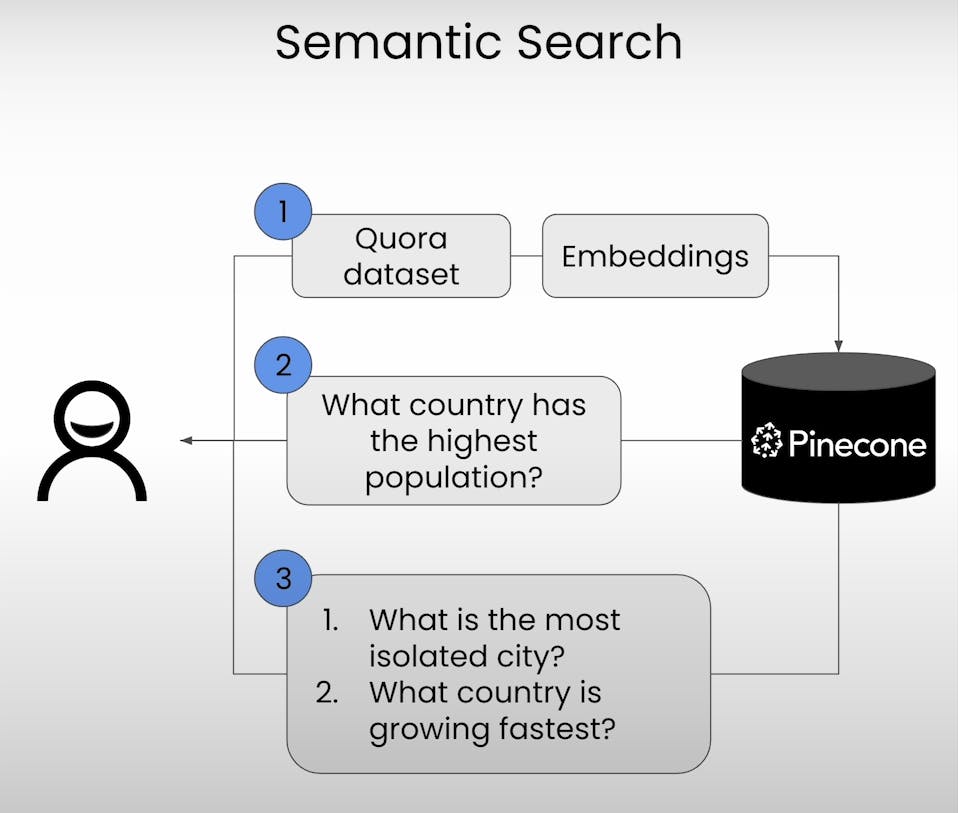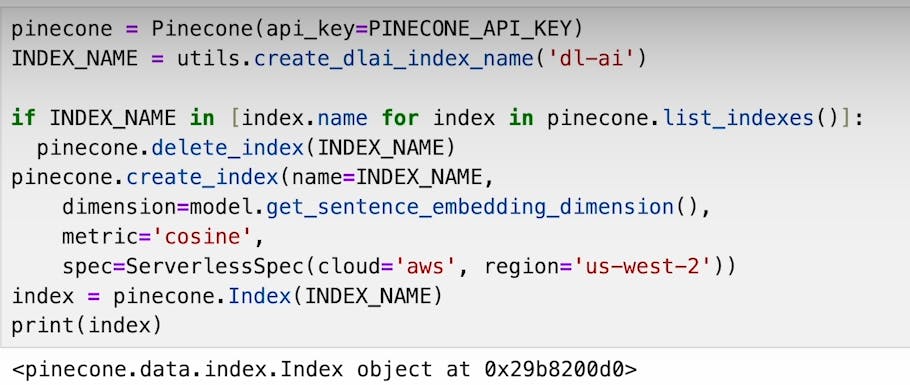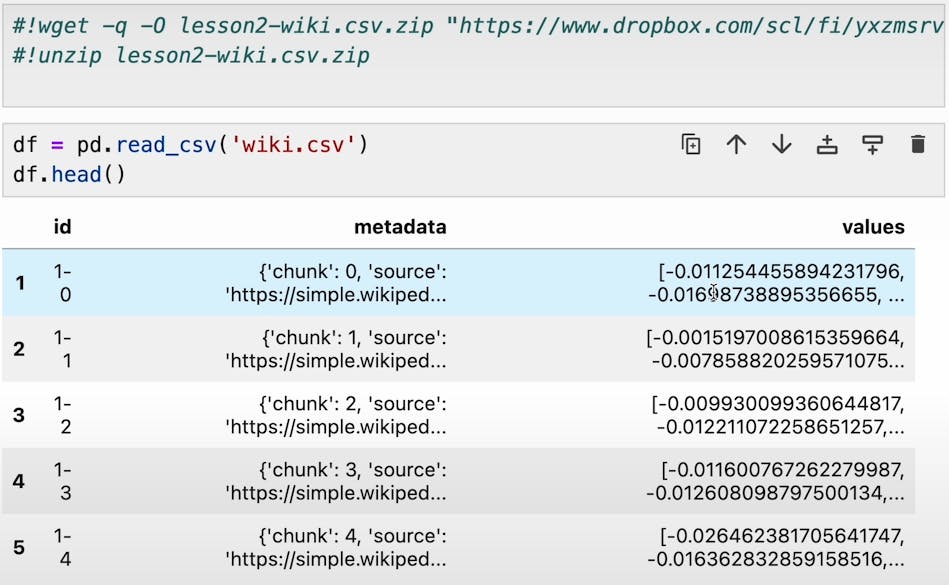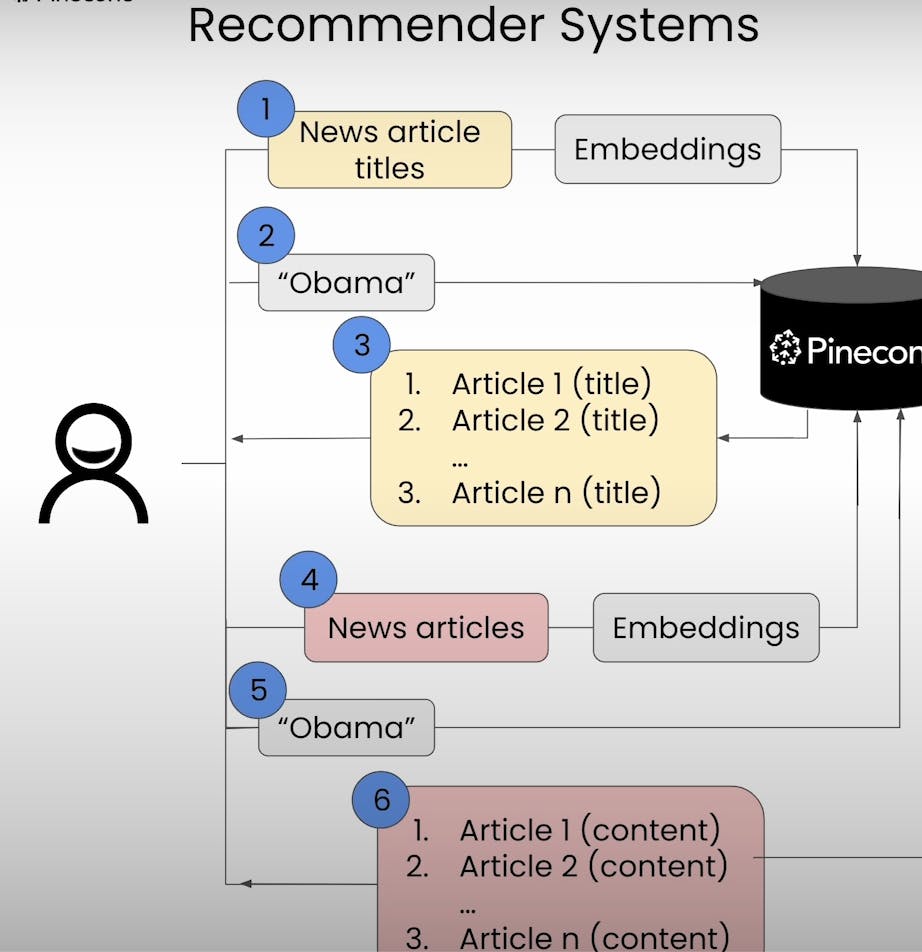Exploring Vector Databases: Part 1 - Building Semantic Search, Retrieval Augmented Generation, and Recommendation Systems with Pinecone

Table of contents
- Introduction:
- Semantic Search with Pinecone:
- a) Prepare the dataset and instantiate an embeddings model.
- b) Establish a connection to Pinecone and create an index.
- c) Store question text along with embeddings in the Pinecone vector store.
- d) Define a helper function to convert user queries into vector embeddings and retrieve top-k results from the vector store.
- Retrieval Augmented Generation (RAG) using Pinecone:
- a) Establish a connection to Pinecone and create an index.
- b) Prepare the dataset and upload essential data to the Pinecone index.
- c) Create a helper function that makes use of openAI and creates embeddings for the input text. Use this helper function to Embed user queries and retrieve similar results from Pinecone.
- d) Define prompts incorporating retrieved context and questions, and utilize OpenAI models for response generation.
- Recommendation Systems powered by Pinecone Vector Database:
- a) Collect and prepare data for recommendations.
- b) Establish a connection to Pinecone and create an index.
- c) Iterate through data, create embeddings for smaller chunks, and store them in Pinecone along with metadata.
- d) Develop a helper function to convert user queries into embeddings, retrieve similar vectors from Pinecone, and return recommendations.
- Summary:
Introduction:
In the era of information abundance, efficient retrieval, and personalized recommendations are paramount for enhancing user experiences across various domains. In this technical blog, we explore the applications of Pinecone Vector Database in building sophisticated systems for semantic search, retrieval augmented generation (RAG), and recommendation systems. Through a step-by-step guide, we delve into the process of creating each system, leveraging the capabilities of Pinecone to optimize search accuracy, content generation, and recommendation relevancy. From understanding the fundamentals to implementing practical solutions, we unveil the potential of vector databases in transforming information retrieval and recommendation paradigms.
Semantic Search with Pinecone:
Semantic search revolutionizes information retrieval by focusing on the meaning of content rather than just keywords. With Pinecone, building a semantic search engine becomes seamless:

a) Prepare the dataset and instantiate an embeddings model.



b) Establish a connection to Pinecone and create an index.

c) Store question text along with embeddings in the Pinecone vector store.

d) Define a helper function to convert user queries into vector embeddings and retrieve top-k results from the vector store.

Retrieval Augmented Generation (RAG) using Pinecone:
RAG optimizes the output of language models by referencing an authoritative knowledge base. Pinecone simplifies the creation of RAG systems:

a) Establish a connection to Pinecone and create an index.

b) Prepare the dataset and upload essential data to the Pinecone index.


c) Create a helper function that makes use of openAI and creates embeddings for the input text. Use this helper function to Embed user queries and retrieve similar results from Pinecone.

d) Define prompts incorporating retrieved context and questions, and utilize OpenAI models for response generation.


Recommendation Systems powered by Pinecone Vector Database:
Recommendation systems predict user preferences and suggest relevant items. Pinecone facilitates the creation of recommendation engines:

a) Collect and prepare data for recommendations.

b) Establish a connection to Pinecone and create an index.

c) Iterate through data, create embeddings for smaller chunks, and store them in Pinecone along with metadata.

d) Develop a helper function to convert user queries into embeddings, retrieve similar vectors from Pinecone, and return recommendations.

Summary:
Pinecone Vector Database empowers the creation of advanced search, generation, and recommendation systems, revolutionizing the way users interact with information. By following the outlined steps, developers can leverage Pinecone's capabilities to build efficient and scalable solutions for semantic search, retrieval augmented generation, and recommendation systems. With Pinecone, the journey towards enhanced user experiences and personalized content recommendation becomes streamlined and accessible, paving the way for innovation in information retrieval and recommendation technologies.